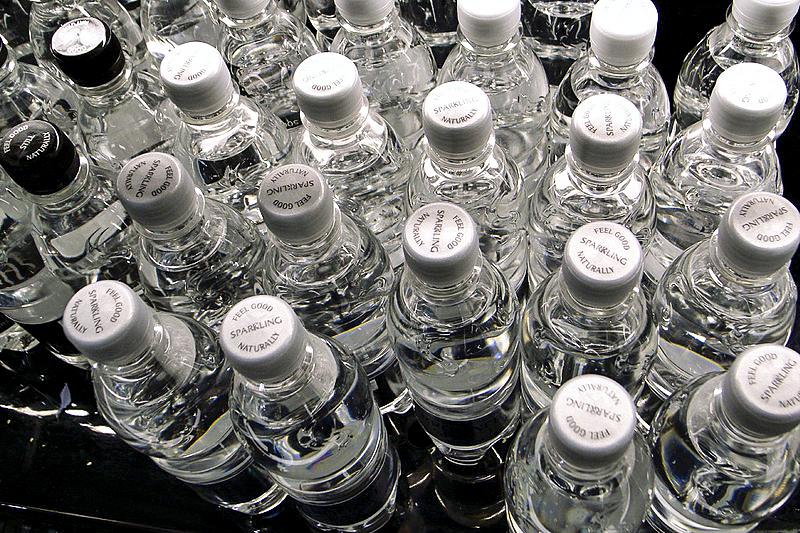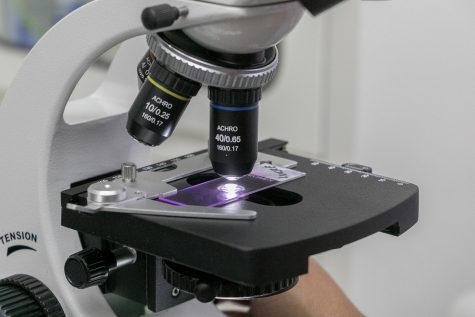Are You Pissing Plastic?
Plastic bottles may be causing cancer and other problems.
It’s my second day of graduate school at FAU and I’m struggling along with the rest of the class through a three-hour long lecture on cancer by a doctor in oncology research. In the middle of his rhetoric, he holds up a plastic bottle and exclaims to the class, “Don’t believe what they say: Plastic can give you cancer.” To clear his throat, he subsequently takes a sip out of his plastic bottle.
As I’m taken aback in confusion, I flash back to a similar scenario in my high school years. As teenagers in a classroom, we asked our substitute chemistry teacher, a retired engineer from the chemical industry, if plastic bottles caused cancer. The old burly man let out a hearty laugh and assured us that plastic was safe. He even went as far as to claim that we could eat the plastic and we would still be fine.
For years the public has been confused on the issue of whether or not plastic bottles are linked to cancer. These two very well educated individuals have completely different takes on the same issue. The problem is, they are both right.
According to a study by the Center for Disease Control in 2003, over 93 percent of all Americans over the age of six urinate Bisphenol A, a molecule used in the manufacture of plastic bottles. BPA weakly mimics the activity of estrogen, the hormone associated with female development.
In high and low doses it disrupts the hormone system that sends regulatory signals throughout the body. Scientific journals have linked BPA to numerous conditions such as breast cancer, prostate cancer, altered behavior, neural development and obesity.
Although some might find it strange that a professor who has dedicated his life to finding a cure for cancer would drink from a potentially hazardous plastic bottle, in a greater context he knows exposure to BPA in our environment is nearly unavoidable. BPA is used in the manufacture of food containers, microwave ovenware, eating utensils, the epoxy lining of metal cans, eyeglasses, compact disks, dental fillings, movie tickets, receipts and much more — nearly everything labeled with the plastic number seven.
Currently, the FDA insists low-level exposure to BPA is safe, yet they’ve disapproved its use in baby bottles and sippy cups. Despite the reassurance of the FDA, groups such as the Breast Cancer Fund, The Environmental Working Group and the Natural Resource Defense Council adamantly oppose the use of BPA in consumable products.
However, before addressing the controversy of BPA, it’s necessary to identify where it fits in among carcinogens (cancer causing agents). We are exposed to carcinogens on a daily basis.
Technically peanut butter and celery sticks are carcinogens, but it would take consuming hundreds of tubs of peanut butter or celery sticks every day to form any considerable risk of developing cancer. On the other end of the spectrum, exposure to nuclear radiation that directly disrupts cellular DNA greatly increases the odds.
It depends on the severity of the carcinogen and the frequency of exposure. For example, smoking just one cigarette is relatively harmless, but if a large group of people starts smoking cigarettes daily, some will likely develop lung cancer.
In this respect, my chemistry teacher was correct — a person could eat a chunk of plastic one time and probably be fine. However, when a population indirectly ingests plastic on a daily basis, the effects of BPA change, particularly before birth.
During development in the womb, fetuses are susceptible to the slightest changes in hormones. A balance between natural hormones like testosterone and estrogen is necessary in determining the development and sex of a fetus. It is proposed at this time that when BPA enters the bloodstream it alters tissue development and increases cellular proliferation, thus increasing the chance of causing breast and prostate cancer later in life.
In the United States, only five companies make polycarbonate plastics from BPA — Bayer, Dow, Hexion Specialty Chemicals, Innovative Plastics and Sunoco — totaling to a $6 billion industry.
While hundreds of journals have found BPA to have developmental and carcinogenic effects, a little over 14 articles, mostly funded by the chemical industry, have found low concentrations of BPA to be safe. Despite the controversy, some countries have taken a proactive approach.
In late December 2012, France passed legislation that banned the use of BPA in all infant products and will ban the use of BPA in all food containers by 2015. Belgium has also banned BPA in food products for children less than three. France is reorganizing its packaging industry in a matter of a few years. Will the United States and the rest of the world follow suit?
















